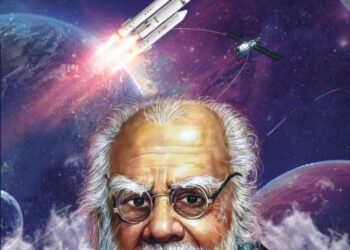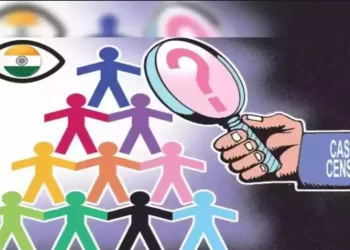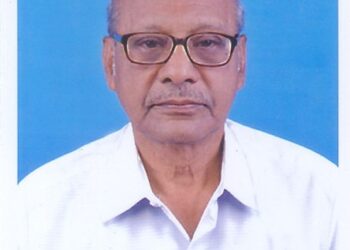Edward Tabash
Well-known atheist debater in the US
Constitutional lawyer, Chair – Center for Inquiry
As chair of the board of directors of the Center for Inquiry (CFI), which publishes this magazine, I and CFI General Counsel Nicholas Little have filed numerous briefs with the U.S. Supreme Court detailing why the religious Right wing is wrong when it asserts that government can favor religious belief over nonbelief and that government must allow religious objectors the right to avoid complying with laws that are binding on the rest of us.
The 6–3 religious Right majority on the Supreme Court issues rulings that defy scientific evidence, rejects science as part of the effort to undo church-state separation, and dismisses scientific evidence generally to achieve other ideological objectives.
We must now confront the awful tragedy that the one institution of government that we could most reliably trust to protect our personal freedoms and make decisions based on reason, from the late 1940s onward, has now become a weapon for imposing religious tyranny and ignoring the very science it used to revere.
Defining Scientifically Based Knowledge
In the 1993 case of Daubert v. Merrill Dow Pharmaceuticals, 509 US 579, the Court set forth criteria for determining whether someone who claims to be an expert in a relevant scientific area should be permitted to testify. The Court ruled that any supposed scientific explanation, to be admissible, must be capable of empirical testing. It even quoted philosopher Karl Popper, known for his “Falsification Theory,” by name. The Court then set forth its definition of knowledge, writing that “the word ‘knowledge’ connotes more than subjective belief or unsupported speculation. The term applies to any body of known facts or to any body of ideas inferred from such facts or accepted as truths on good grounds.” An example was provided explaining how a study of the phases of the Moon might be relevant as to whether a particular night was dark, if such darkness were an issue in the case. However, it would not be admissible to show when a full moon appeared to argue that such a Moon can affect whether someone behaves rationally or not.
In the 1999 case of Kumho Tire Company v. Carmichael, 526 US 137, the Court said that some categories of claimed knowledge are so inherently unreliable that supposed expert testimony based on them would never be admissible. The Court cited astrology and necromancy as examples.
However, the Court’s determination of what constitutes valid scientific knowledge for purposes of admissibility does not spell out the relative weight that must be given to such evidence. We can see this by the way the current Court majority has ignored clear scientific evidence to obtain outcomes based on unconstitutional religious and political motives.
Barbarians at the Gate
We are lucky that the Court had not yet fallen to the barbarians the last time it decided an evolution vs. creationism case. We were fortunate that the Court did not yet have a religious Right wing majority when it decided Edwards v. Aguillard, 482 US 578, in 1987. Louisiana had passed a law requiring that creationism be taught in the public schools alongside evolution to provide a so-called “balanced view” of human origins. The state argued that it should be given the chance to demonstrate that this law was not based on religion but on a sound scientific theory about how the universe and everything in it, including humans, suddenly appeared in our present forms. Science and reality won that case, 7–2.
However, the two dissenters, Justice Antonin Scalia, joined by then Chief Justice William Rehnquist, argued that Louisiana should have a chance to demonstrate its claim, because there are numerous reputable scientists who agree with claims about the spontaneous, sudden appearance of all life in the forms we have today, assuring us that they don’t need to base their assertions on any deity or supernatural being. It was frightening to see how two of the most well-known justices in modern times dismissed science to clear the way for government to promote pure religious belief.
It’s even more frightening that what was then a minority of just two justices who would intentionally flout science to assist government in promoting religion has today sadly grown into a supermajority of six.
Science and Safety
The present Supreme Court majority demonstrated contempt for science by carving out special rights permitting only religious objectors to avoid complying with otherwise society-wide COVID-19 safety measures. In late 2020, in Roman Catholic Diocese of Brooklyn v. Cuomo, 141 S.Ct. 63, the Court misused the concept of the free exercise of religion to strike down restrictions on the number of people who can gather for worship services during the COVID-19 pandemic. In dissent, Justice Stephen Breyer pointed out that the rules established for religious activities also applied to similar meetings at public lectures, concerts, and theatrical performances where—as in places of worship—people were more likely to be gathered together more closely for longer periods of time. Further, Breyer argued that the Court’s precedents recognize the importance of courts granting elected officials broad discretion when they must act on the basis of uncertain and swiftly changing medical and scientific information, as in the dire situation New York was facing with COVID-19.
Breyer lamented the majority’s decision because members of the scientific and medical communities tell us that the virus is transmitted from person to person through respiratory droplets produced when an individual or group of people talk, sing, cough, or breathe near each other, citing the briefs of the World Health Organization and the American Medical Association. Thus, according to experts, the risk of transmission is higher when people are in close contact with one another for prolonged periods of time, particularly indoors or in other enclosed spaces. Breyer emphasized how the Court majority was intentionally disregarding crucial scientific information that would reduce the harm of COVID-19, just so that religious objectors could be exempt from complying with these essential laws, even if such exemptions jeopardized public health.
Free Exercise vs. Special Rights
The Free Exercise Clause of the Constitution is a provision of the First Amendment designed to protect those with any viewpoint on matters of religion from suffering fewer legal rights than those with different beliefs. It was never meant to provide exclusive special rights to avoid complying with generally applicable laws, particularly laws that are crucial to public well-being.
In 2021, deciding South Bay United Pentacostal Church v. Newsom, 141 S.Ct.716, the 6–3 religious Right majority voted to strike down several restrictions that California had in place regarding indoor religious services. There were three sets of restrictions the Court dealt with. One restriction prohibited all indoor religious services in Tier 1 areas: those parts of the state with the highest infection rates. Another restriction limited religious gatherings in other parts of the state to 25 percent of capacity. The third prohibited chanting and singing in all indoor services. The result was that the six-vote supermajority allowed indoor religious services in all areas of the state, regardless of infection level, at 25 percent capacity. At least the ban on chanting and singing was upheld, showing that the majority was willing to make a small concession to science as long as it could be discarded overall. The six-vote majority even invited houses of worship to submit evidence that they were being singled out for special deprivation of gathering rights that were not imposed on other types of groups or businesses.
There were only three justices on the side of church-state separation: Stephen Breyer, Elena Kagan, and Sonia Sotomayor.
Justice Kagan wrote a powerful dissent, joined by the other two. She pointed out that California did not single out religious gatherings for any fewer rights. The state grouped together political meetings, attendance at lectures, movies, plays, concerts, and the hospitality industry. Religious gatherings were grouped with other types of gatherings based on attendees’ proximity and the length of time any danger of exposure lasted. In providing preferential treatment for religious gatherings, the majority had ignored scientific evidence. California provided experts showing how shopping for groceries differed from worship services in the number of droplets to which those engaging in either activity were exposed. Kagan also wrote, “This is no garden-variety legal error: In forcing California to ignore its experts’ scientific findings, the Court impairs the State’s effort to address a public health emergency.”
‘I Cannot Think of Many Things More Frightening’
In June 2022, the Court issued a 6–3 ruling that brazenly ignored the scientific evidence for how climate change threatens the nation and the world. With no actual constitutional basis, the majority deprived the Environmental Protection Agency (EPA) of the power granted to it by Congress to curtail greenhouse gas emissions. This preposterous decision was fabricated for no reason other than political support for the business interests of power plant operators and the states in which they are located.
In West Virginia v. EPA, 142 S.Ct. 2587, the Court majority voted to strike down regulations that Congress clearly empowered the EPA to promulgate under the Clean Air Act. These rules authorized the regulation of power plants that emit greenhouse gasses, which severely aggravate climate change. Just a week before this, the Court majority obliterated almost fifty years of protecting abortion rights under the Constitution. A rationale used by the Court was that the term abortion appears nowhere in the Constitution. Yet in the EPA case, the Court majority invented out of nowhere something called the “major questions” doctrine to have an excuse to invalidate the powers to regulate greenhouse gasses that Congress conferred on the EPA. Supposedly, under this major questions doctrine, Congress has to be even more specific than it was if it wants to authorize the EPA to regulate such power plants. There is no basis in the Constitution for such a requirement. Under the Federal Supremacy Clause of the Constitution, Article VI, Paragraph 2, such congressional delegation of power to a specialized agency with expert knowledge in a given area is clearly permissible.
Dissenting, Justice Kagan wrote, “Today, the Court strips the Environmental Protection Agency (EPA) of the power Congress gave it to respond to ‘the most pressing environmental challenge of our time.’” She concluded her dissent by saying, “The stakes here are high. Yet the Court today prevents congressionally authorized agency action to curb power plants’ carbon dioxide emissions. The Court appoints itself—instead of Congress or the expert agency—the decision-maker on climate policy. I cannot think of many things more frightening.” We certainly join Justice Kagan in being frightened.
The Fight of Our Lives
The religious Right takeover of the Supreme Court that I have been literally screaming about for forty-two years has finally happened. There is only one way for us to have any possibility of ever again being protected by the types of Supreme Court majorities we had in the past: From now on, we must treat every presidential election and every election for the U.S. Senate as a referendum on the Court. Whether pro–church-state separation and pro-science justices can be successfully placed on the Court when there is a vacancy will depend on who will be president at the time and the composition of the Senate.
Whether it takes the rest of our lives, or even several generations, we must do everything we can to ensure that at some point there will once again be a Supreme Court majority that follows reason, science, and the true meaning of the Religion Clause of the First Amendment—which is to secure equal rights for believers and nonbelievers—and to never again allow religious objectors the opportunity to avoid complying with laws that were designed to secure the health and safety of all of us.
Note: This article was originally delivered as an opening speech at CSICon, the conference of the Center for Inquiry’s Committee for Skeptical Inquiry, on October 23, 2022. It has been lightly edited for publication.
Courtesy: Free Inquiry,
February / March 2023









